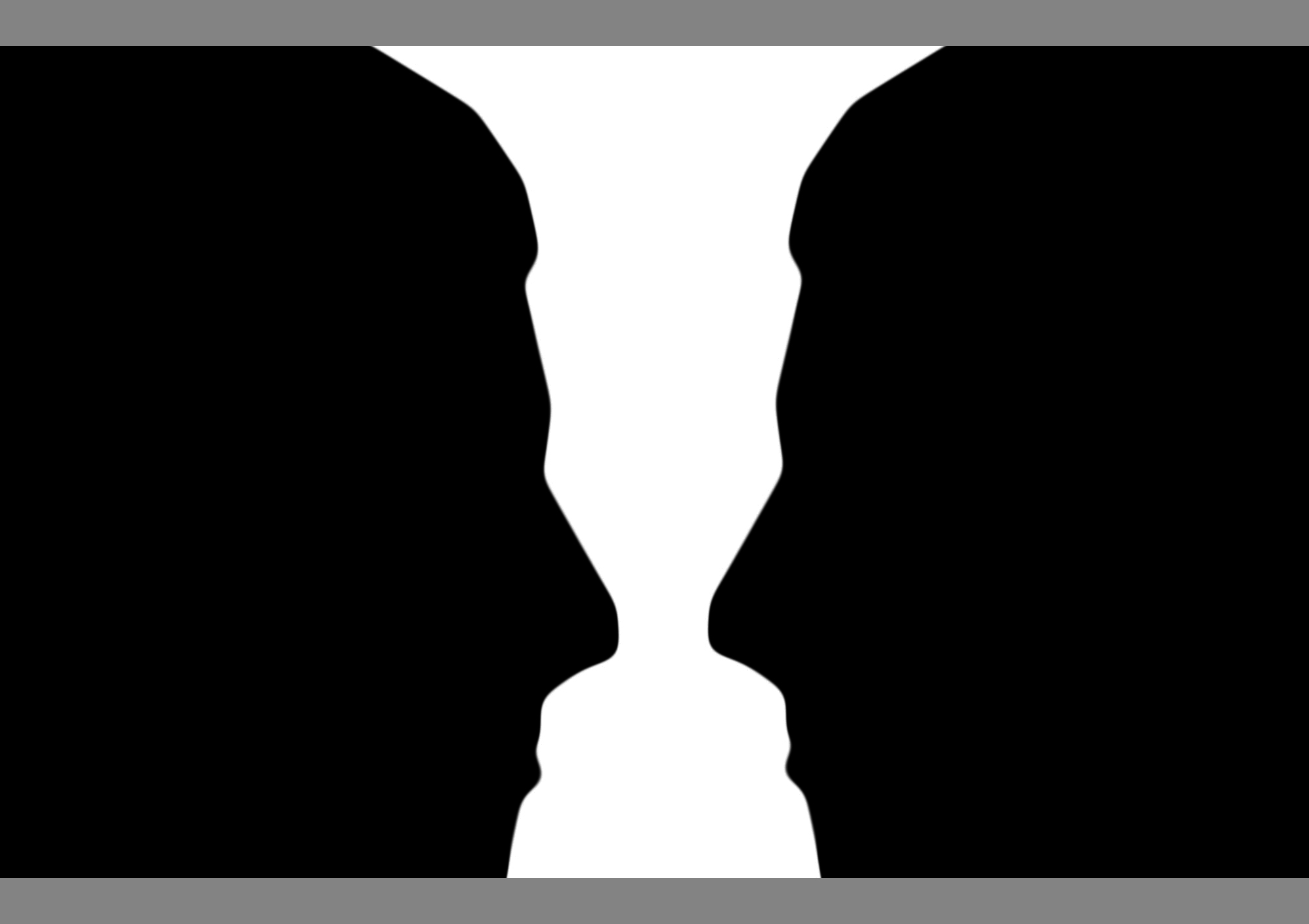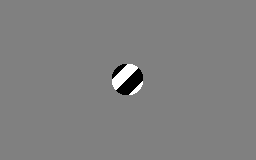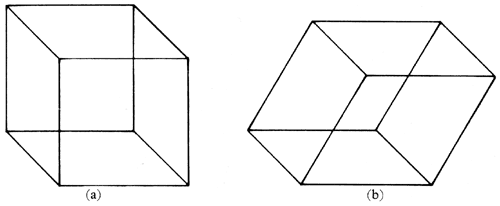Visual Illusions:
Visual illusions are the easiest way to trick the senses, as the eyes are by far the easiest sense to confuse.
WHAT DO YOU SEE?
Depending on who looks at this picture, they see different things. Some people see a white vase, while others see two sihlouettes looking at each other. Still others see both.
WHICH IS BIGGER?
Which of the orange circles is bigger?
ANSWER:
They are the same size. The one on the right only appears larger because of the smaller blue circles surrounding it.
WHICH IS BIGGER?
Which of the orange circles is bigger?
ANSWER:
They are the same size. The one on the right only appears larger because of the smaller blue circles surrounding it.













